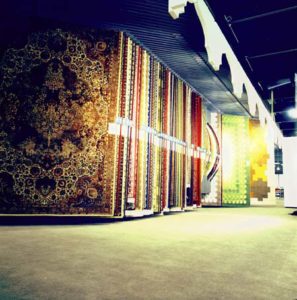
There seems to be an endless selection of rugs available. You attempt to do some research to determine what’s best for you or your family and there is also an endless stream of conflicting information. The biggest problem is many articles focus on aesthetics with very little consideration toward maintenance. Some rugs look nice but are poorly designed and will develop waves quickly or wear poorly and others are manufactured with materials that yellow when cleaned, warp or their fibers prematurely get matted or crushed. So without focusing on technical specs which often beg more questions than they answer, let’s look at some simple concepts.
Wool Rugs
Wool offers lifespan and durability and can last a lifetime if properly maintained. It also offers resilience so that it bounces back from traffic or crushing due to the weight of furniture and represents a good long term investment. However, wool is expensive and pets and children have to be considered. Wool absorbs stains more easily and can get permanently damaged. So wool is probably reserved for those where serenity abounds.
Other Natural Fiber Rugs
Rugs made of sisal and seagrass have a beautiful aesthetic appeal and they seem to really make a room look great. However, the downside is moisture and humidity can be very hard on these rugs making cleaning difficult as shrinkage or discoloration can occur if done improperly. Similarly, stains can easily become permanent because they’re absorbed and can’t be aggressively cleaned. Lastly, sisal is not a very comfortable fiber to walk on. Maintenance can be a nightmare in the wrong setting.
Synthetic Rugs
If your household is populated by kids and pets, synthetic rugs will serve you best. Unlike wool which is a natural fiber where the wrong spill can seep past the wool’s inherent oils and become permanent, stains don’t penetrate synthetics in the same manner. Synthetics tend to repel stains better so that they can be removed easier, or stronger stain removers can be applied with less risk of damage.
Nylon
The gold standard for synthetics is nylon which holds color well, hides dirt, doesn’t crush as much as other synthetic types and is more kid-proof so it will generally last longer than some of the other types of synthetics. Since synthetics have a lower price point, nylon is your best option and is fairly easy to maintain
Other Types of Synthetics
Other types of synthetics are polypropylene (olefin), polyester and acrylic. Olefin is inexpensive and stain-resistant but has many drawbacks. Olefin attracts oil which is easily tracked from driveway and road surfaces which can yellow the fibers. The yellowing can become permanent. It also crushes easily and tends to look matted more quickly. Polyester rugs don’t have the resilience of nylon and don’t bounce back from crushing and oily spills can more easily resurface. Acrylic rugs, traditionally used for bath mats due to water resistant properties are not that durable and high traffic will take a toll on them.
Other Things to Look For
Some rugs sold at chain outlets are poorly constructed which causes wear issues and maintenance problems. The result is they can become warped more easily and require sending them out for cleaning which can be expensive relative to their cost. Generally, area rugs that are machine made should have a decent amount of pile and will be easy to maintain. Fiber density is important in that it provides overall support. Very thin rugs, especially machine made or with differences between the sub backing and primary backing can be prone to warping.
There is a wide variety of rugs with similar characteristics that wear or clean differently. It’s important to ask questions when purchasing any rug. The cost of the rug, and ongoing cost of maintenance are things to be considered. Some can be maintained onsite which is economical and some require special processing which tends to be far more expensive. These factors should be carefully weighed.

